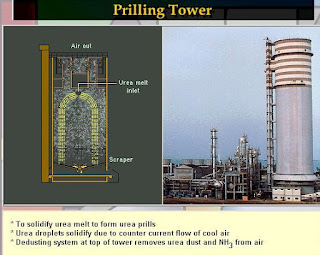The experiment by Woehler showed that organic chemicals could be prepared from “inorganic” chemicals. This synthesis of urea in 1828 marks the beginning of synthetic organic chemical production. Most early plants were built to supply downstream industrial chemical units rather than to manufacture fertilizer products. The demand for urea as an important fertilizer increased considerably by the 1960’s by which time any processes for urea manufacture had become available.
The six major processes for urea production being used in the 60’s were chemico, inventa, momtecatini, and pechiney-grace, stamicarbon and toyokoastu. Most of these processes were offered on a once through, partial recycle or total recycle basis. The principal difference between these propriety processes was the manner in which the ammonia and carbon dioxide from the ammonia carbamate decomposers were recycled to the urea synthesis autoclave.
THE MAJOR FEATURES OF THESE PROCESSES ARE DESCRIBED BELOW:
CHEMICO PROCESS:
Chemico’s original recycle process developed in 1955 was based upon the use of monoethanolamine (MEA) as a selective solvent for separating the CO2 from NH3-CO2 mixture. The purified ammonia was then condensed and recycled decompose the carbamate, saving steam and cooling water. This process also claimed lower utility costs than processes utilizing oil slurry or selective solvents.
In later development of the chemico total recycle process, two- urea synthesis autoclaves were operated in parallel. One reactor as feed, only fresh ammonia and carbon dioxide, while the other reactor was fed the recycled ammonium carbamate solution. This minimized the effect of received water and the overall urea conversion to above 60%.
INVENTA PROCESS:
Inventa process included once through, partial recycle and total recycle. A feature of the process was the use of a special construction material to limit corrosion, and the use of urea nitrate solution as a selective solvent for separating ammonia in the total recycled version. The ammonia and carbon dioxide feed ratio between 2 to 3 was fed to the autoclave. The effluent from the autoclave containing urea, water ammonium carbamate and excess carbon dioxide is flashed in carbamate decomposers. The off-gases from these decomposers are absorbed in urea in urea nitrate solution, which selectively absorbs ammonia. This ammonia is stripped from the solvent and both CO2, NH3 are sent to the autoclave in separate streams.
MONTE CATINI PROCESS:
The Fauser-Montecatini process was offered by montecatini, Italy. Two methods of liquid recycle were offered an aqueous recycle scheme and liquid ammonia-recycling scheme. The advantage of recycling with ammonium carbamate in the liquid is that raising the conversion of ammonium carbamate to urea does not return water to the synthesis autoclave there. In the aqueous recycle process the pressure employed was 180-200Kg/cm^2g and the temperature was between 180*c to 190*c. the effluent from the urea synthesis is led down to a medium pressure of about 21Kg/cm^2g in the first stage and close to atmospheric in the second stage of the decomposer. The off-gases from the first decomposer consisted mainly of ammonia with some carbon dioxide, and this was absorbed in water and recycled back to the autoclave in an aqueous solution. The ammonia and carbon dioxide from the second decomposer was absorbed in water and this dilute solution used to absorb the gases entering the first absorber.
PECHINEY-GRACE PROCESS:
It was a total recycle scheme. The basic feature of this process was that the ammonium carbamate was that increasing the conversion of urea did not recycle water to the autoclave, there. The feed of ammonia and carbon dioxide (in 2:1 mole ratio), along with recycling ammonium carbamate in a suspension of oil. The oil acted as a heat-balancing medium throughout the process, and also helped to limit corrosion.
STAMI CARBON PROCESS:
Once through, partial recycle and total recycle systems were offered. The total recycle scheme offered the best economy and hence became popular. One feature of the process was the introduction of a controlled amount of oxygen into the urea synthesis autoclave, limiting corrosion of the stainless steel. A later development was a two-reactor scheme to minimize the effect of recycled water on the urea conversion rate.
TOYO KOATSU PROCESS:
Toyo Kotsu built the first Japanese urea plant in 1937, though it was a non-commercial unit. The recycling process involved recalculating the ammonium carbamate in a water solution.
Snamprogetti used the stripping technique to decompose the uncovered carbamate. However, the stripping agent is ammonia instead of CO2. In contrast to the solution recycle processes; the stripping process originally required a tall structure to accommodate the reactor, stripper and condenser. This was necessary to ensure the flow of carbamate recycles to the reactor by gravity.
Prilling Towers of Urea manufacturing
 |
| Prilling Tower |